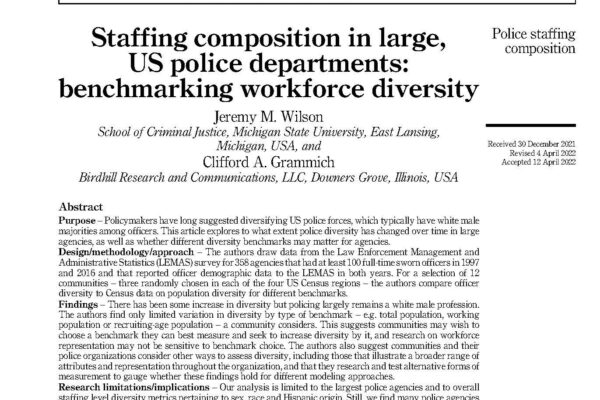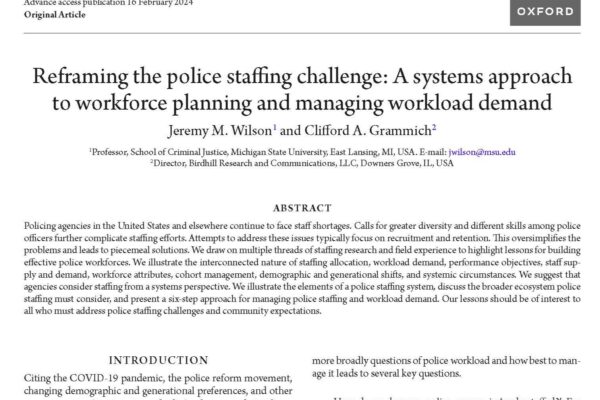Officer Views in Contracting, Merger, and Hybrid Agencies. Policing: An International Journal, Vol. 42 (2): 270-283, 2019.
The purpose of this paper is to assess officer perceptions of consolidation of law enforcement agencies under three specific models: contracting, merger and a hybrid of regionalization and contracting. A survey was administered to 139 officers employed by four agencies using one of the models of interest. Officers generally support consolidation, but views vary by agency type. Officers in the contracting agencies, for example, generally viewed consolidation as less cost effective than officers in other agencies viewed it, but were more…






